Abstract
Environmental operations may be classified according to whether they have evocative or function-altering effects. Evocative events, such as the presentation of unconditioned and conditioned stimuli, establishing operations, and discriminative stimuli, serve to increase, decrease, or maintain the momentary frequency of behavior. Function-altering operations, such as operant and respondent conditioning, the correlation of stimuli, and the presentation of certain verbal stimuli, serve to increase, decrease, or maintain the evocative and function-altering (e.g., reinforcing or punishing) functions of other events. This paper expands upon the functional taxonomy of environmental events described by Michael (1993a). The resulting classification scheme should permit behavior analysts to more easily respond to similarities and differences between functional environmental events. This paper discusses implications of the suggested taxonomy for how behavior analysts talk about motivational variables, discriminative stimuli, the operant unit of analysis, and the distinction between operant and respondent conditioning.
Keywords: evocative functions, function-altering operations, respondent conditioning, operant conditioning, units of analysis, determinism
Full text
PDF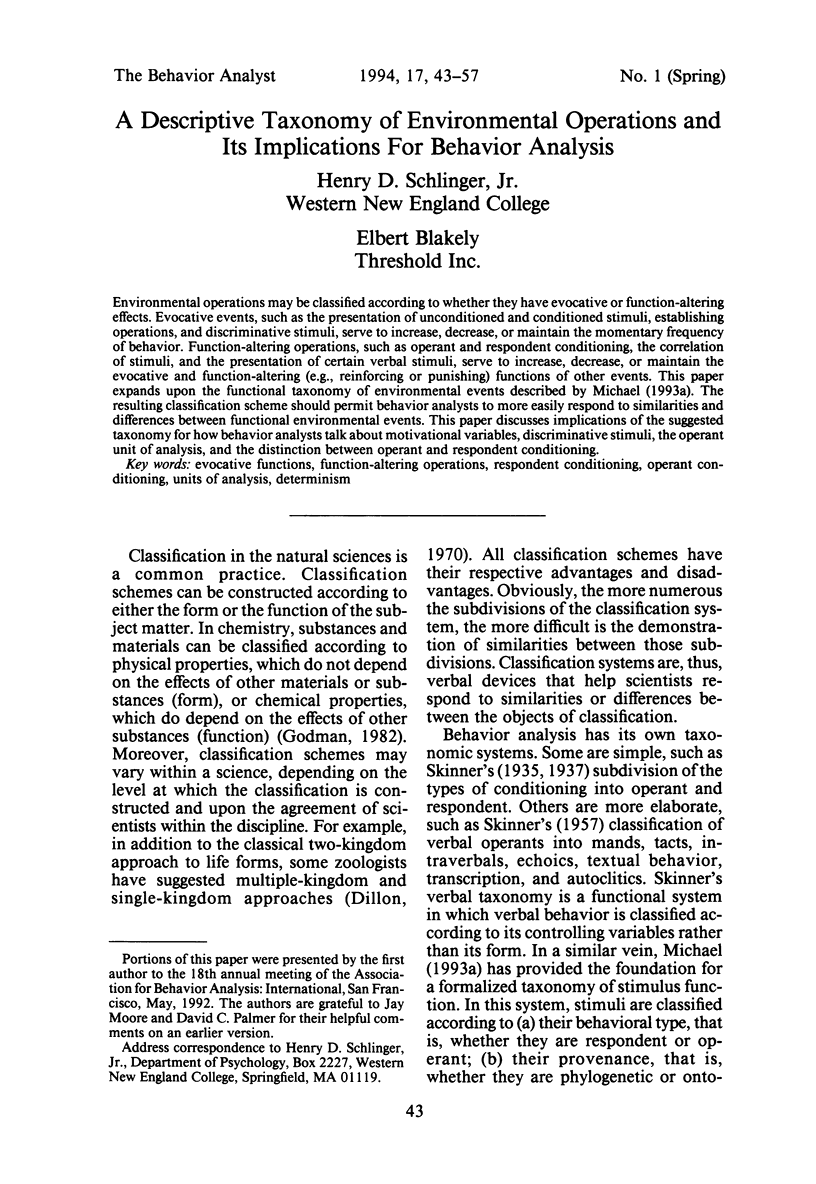
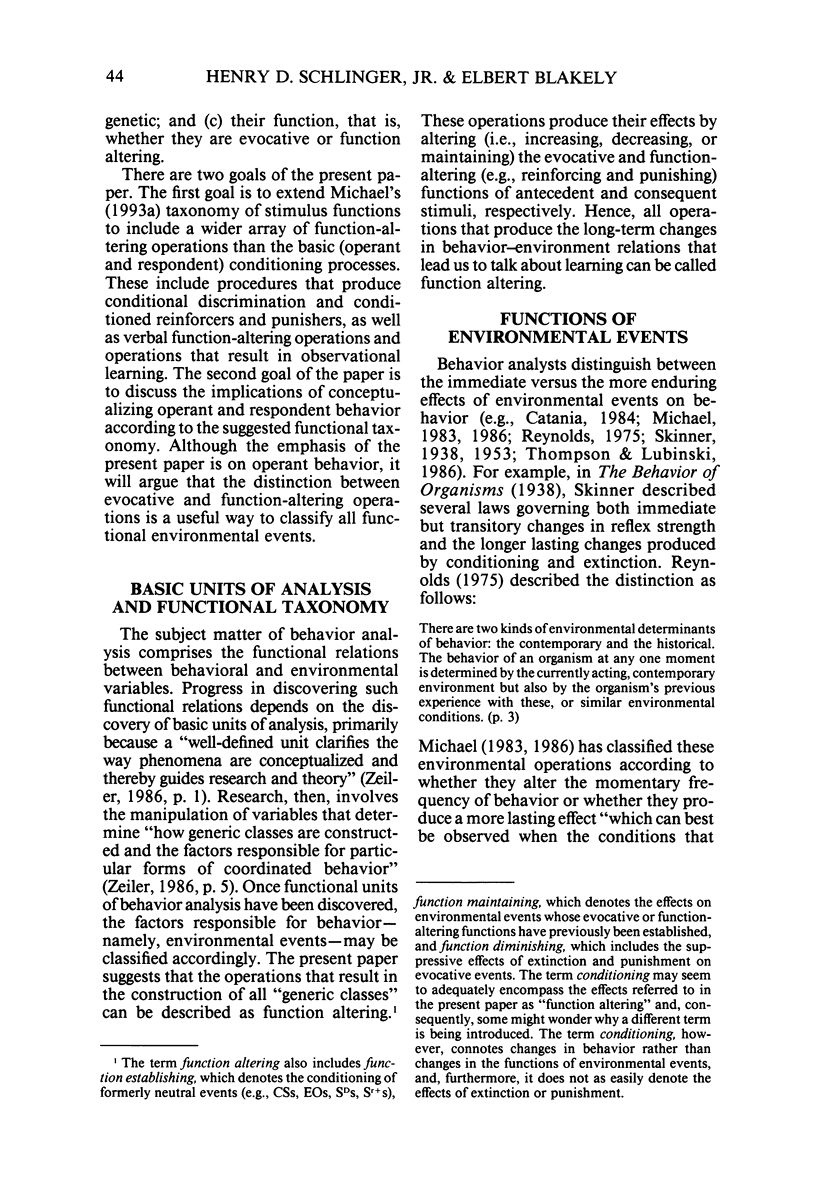
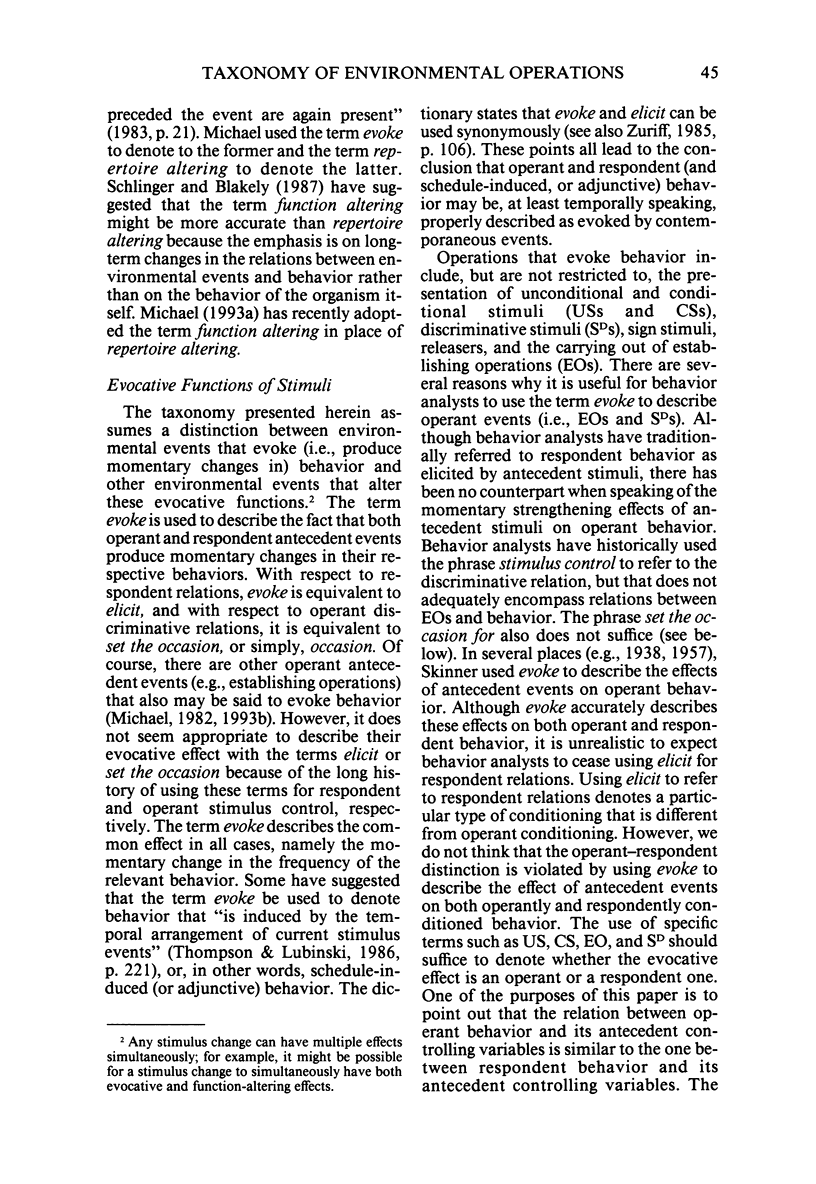
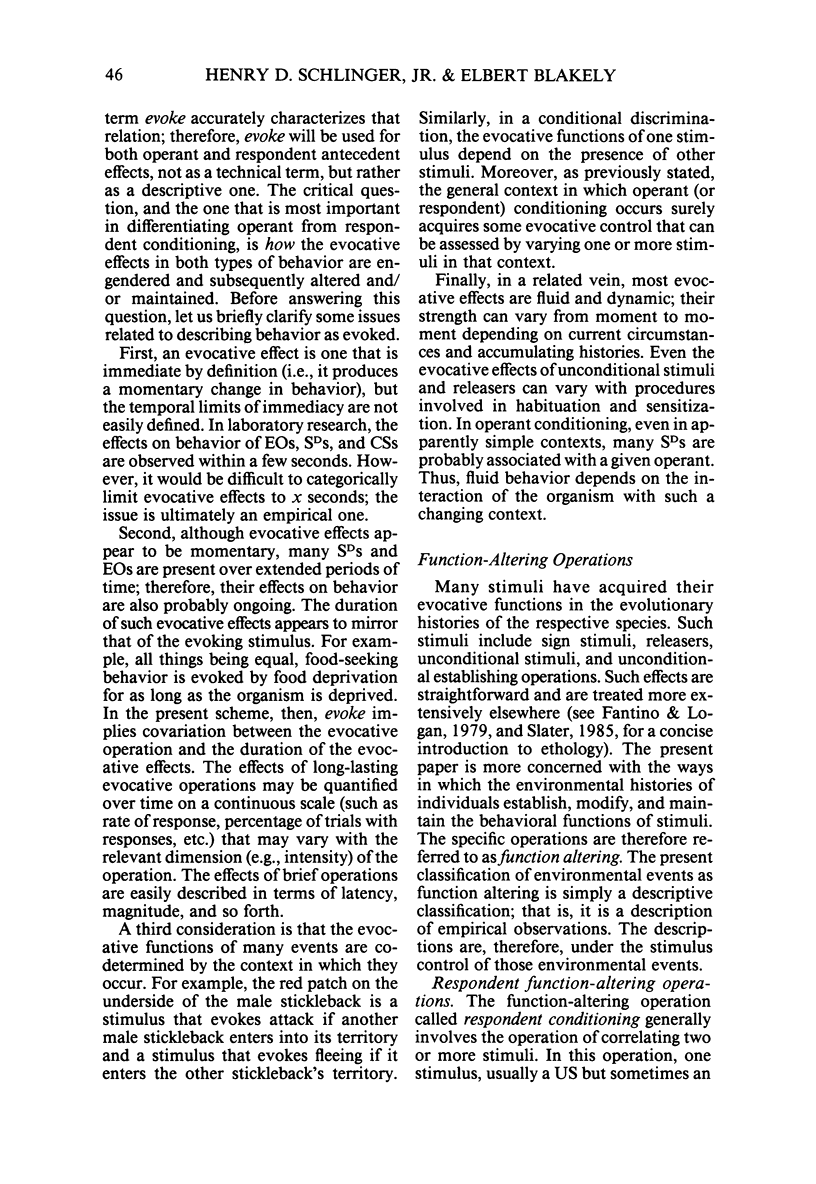
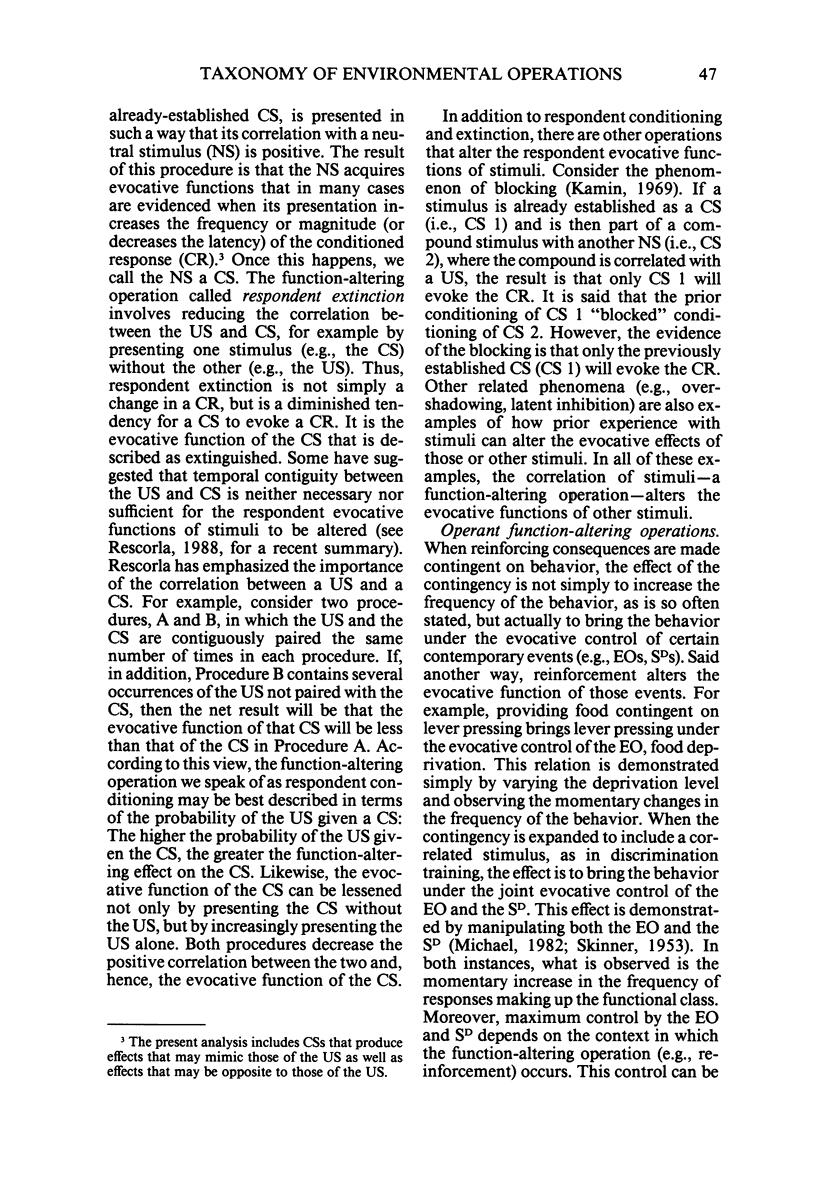
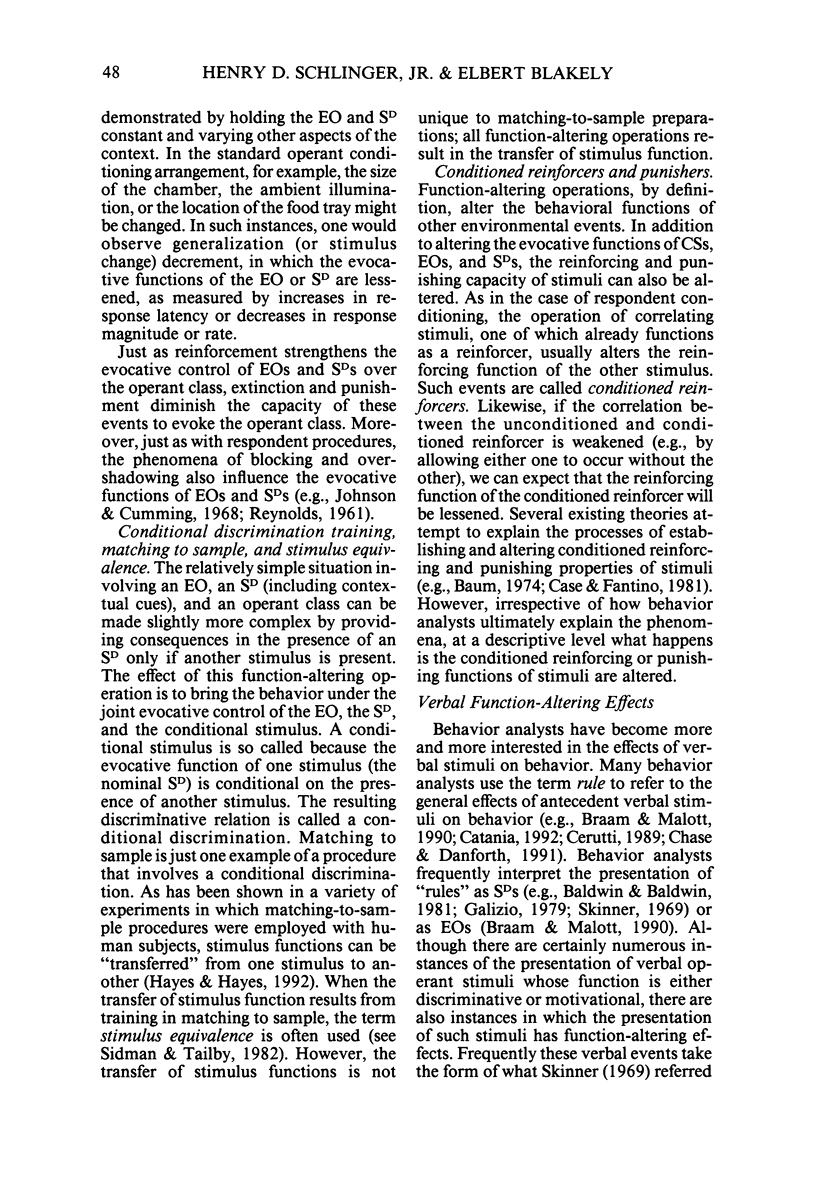
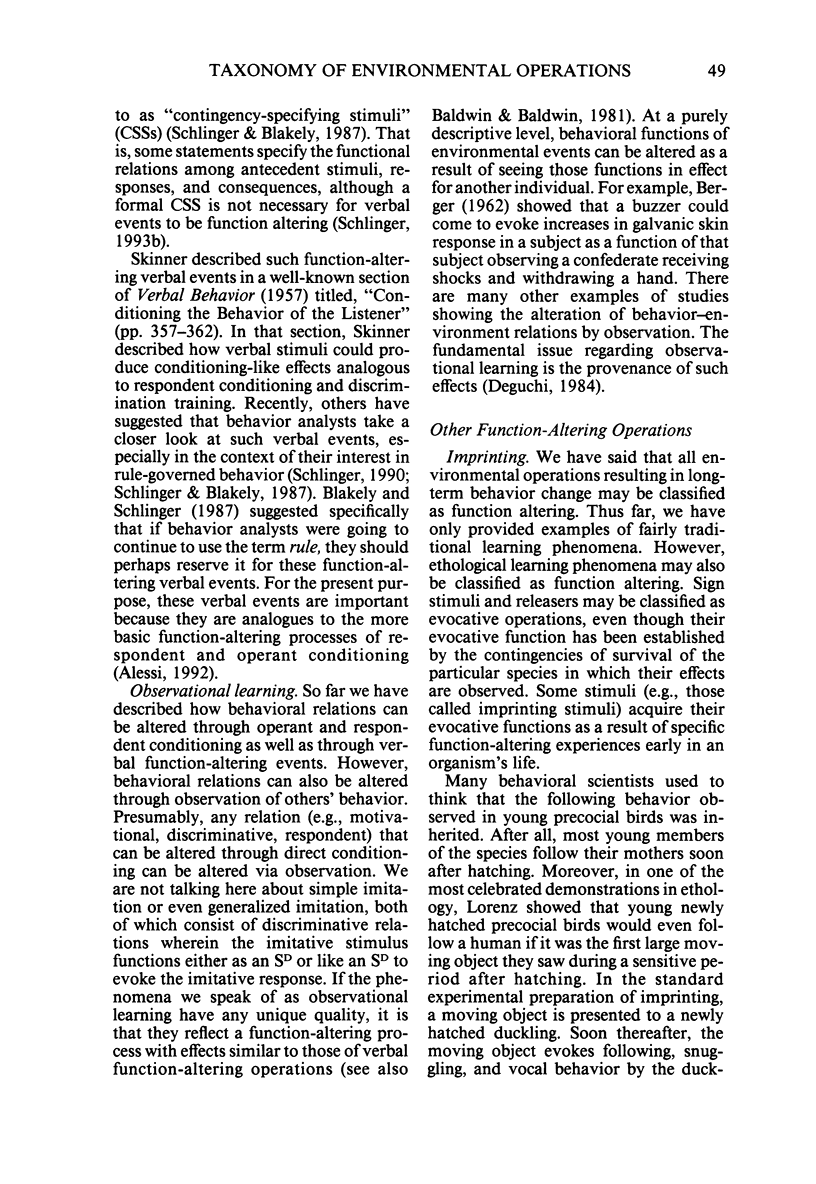
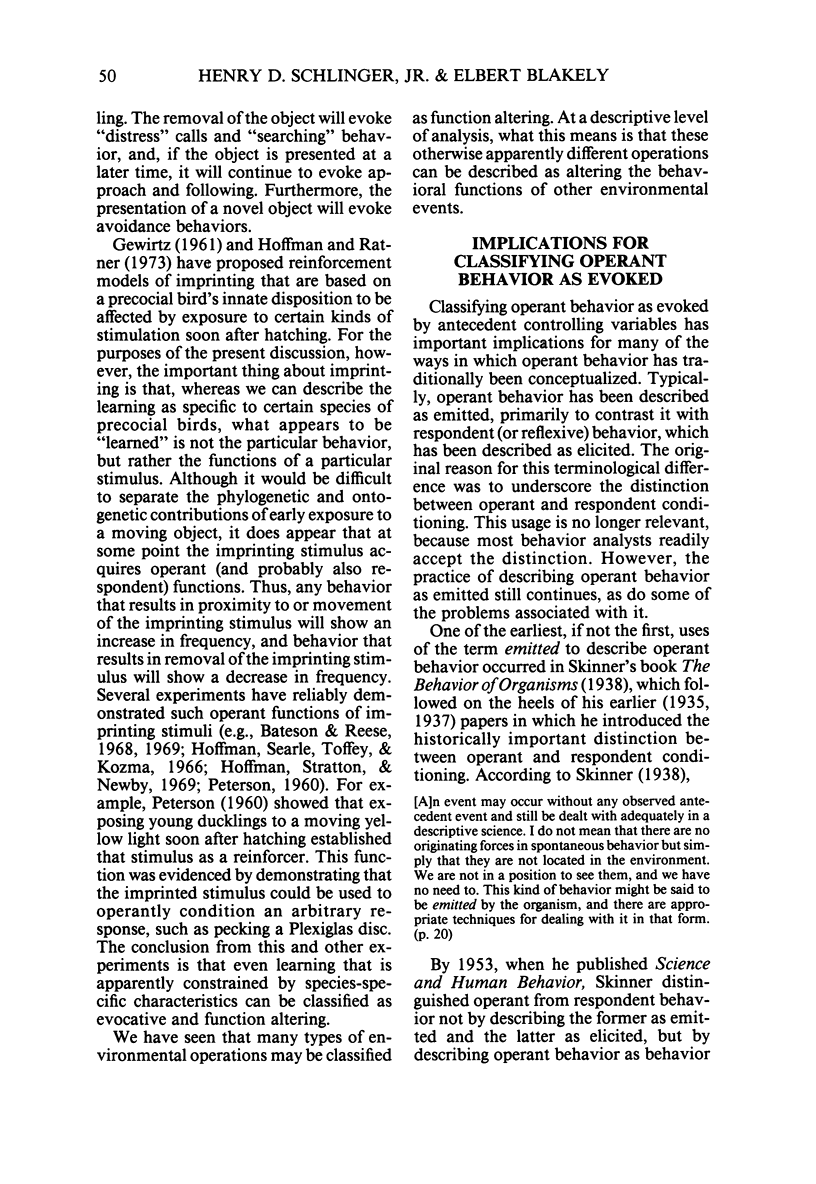
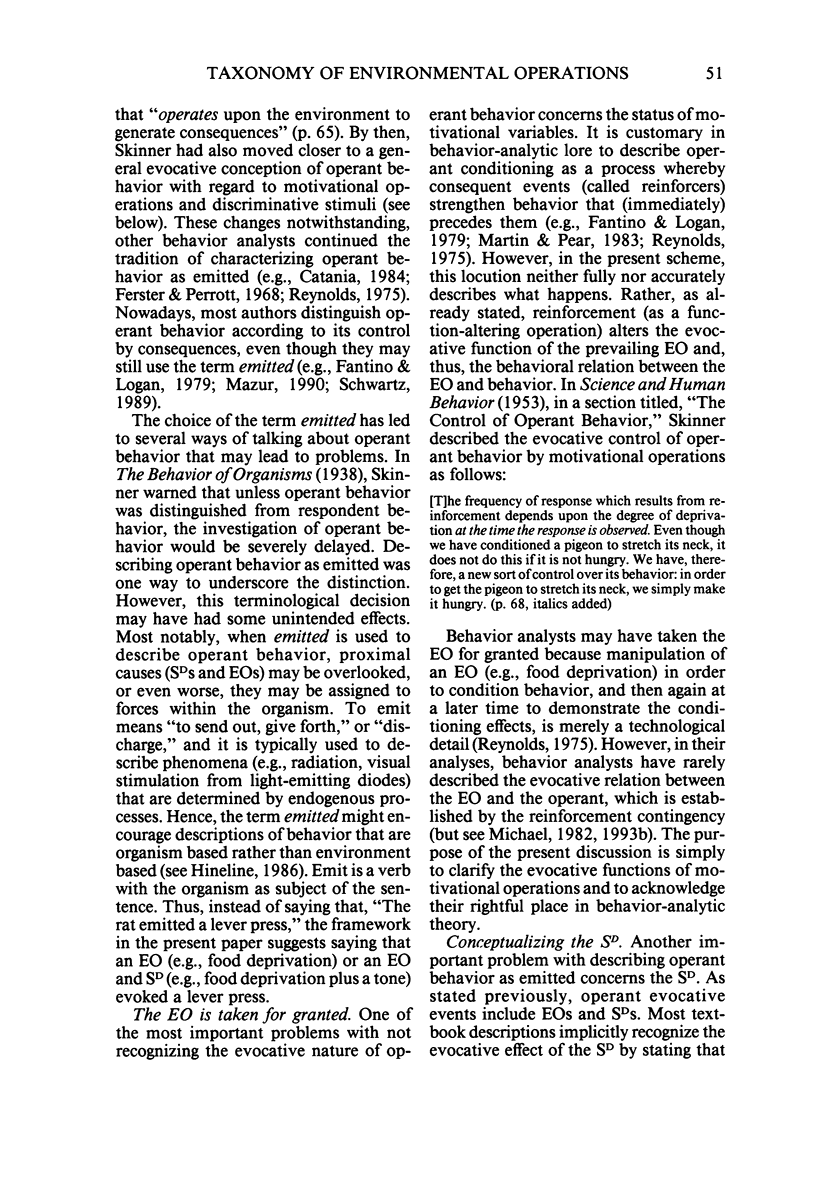
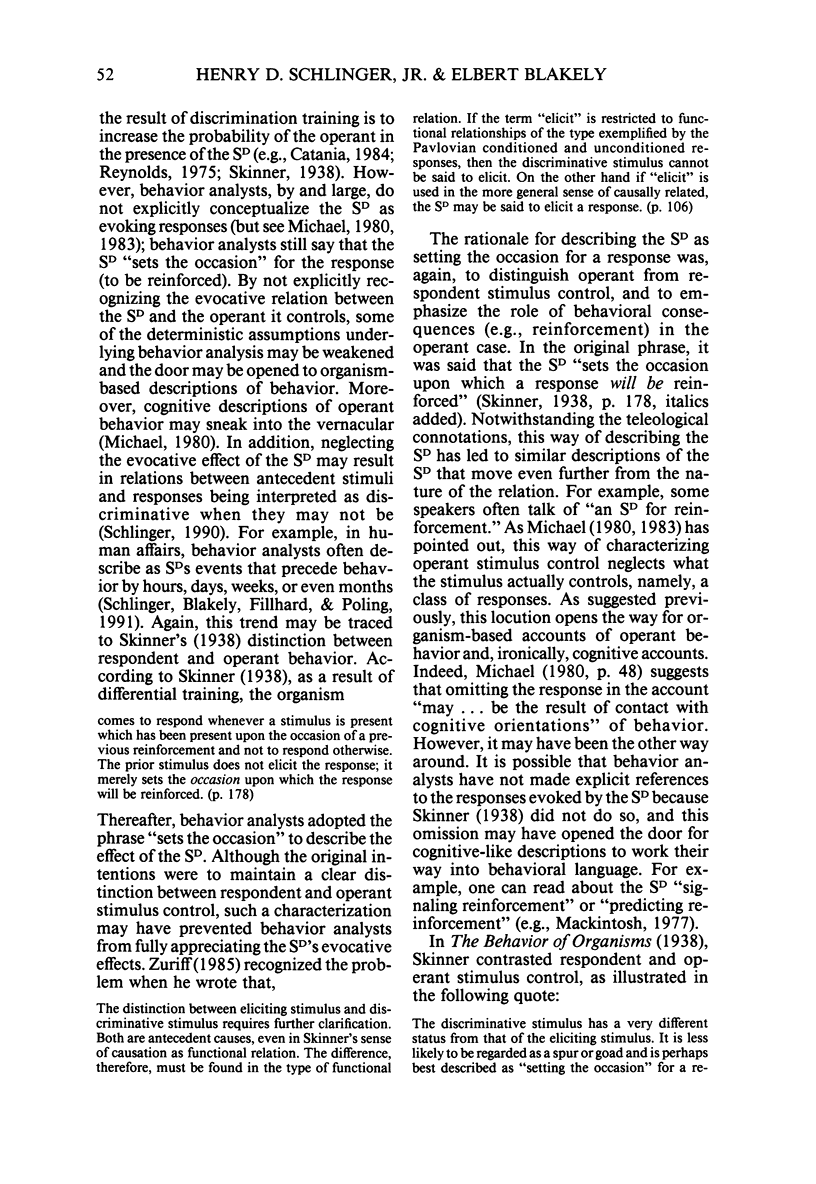
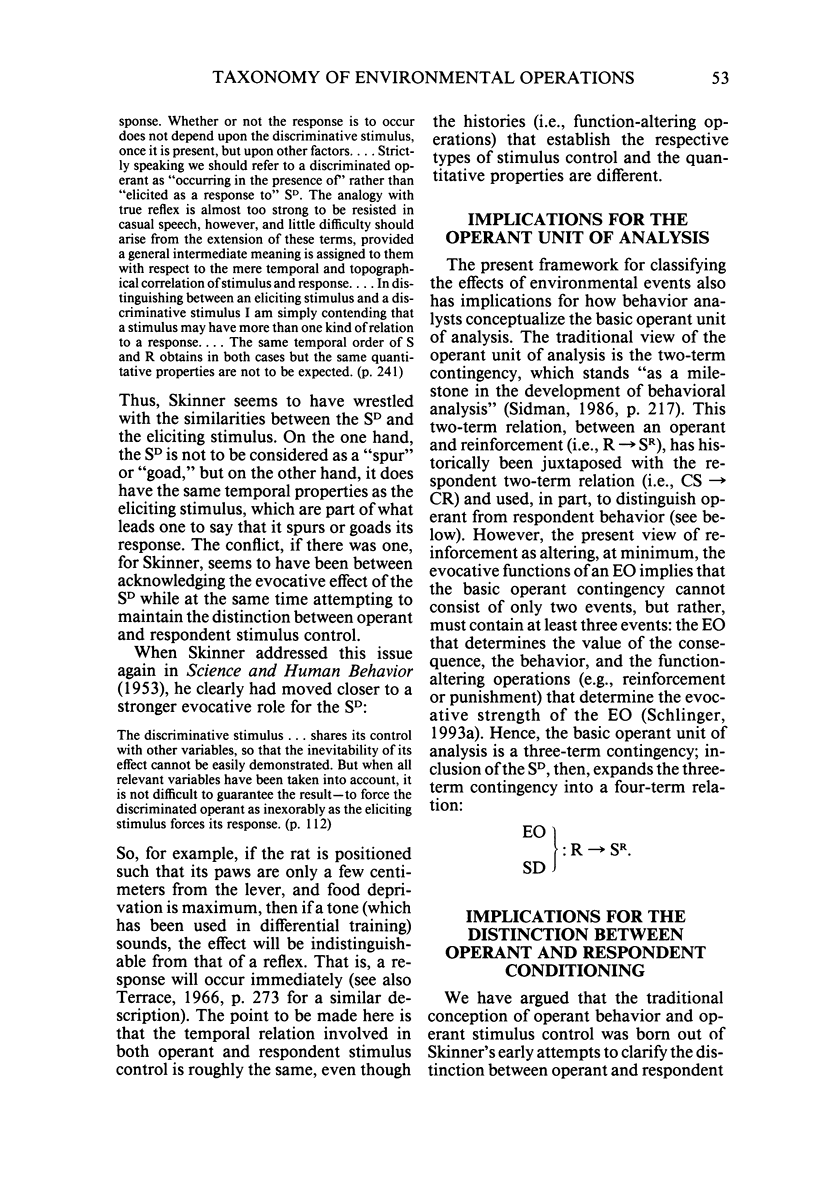
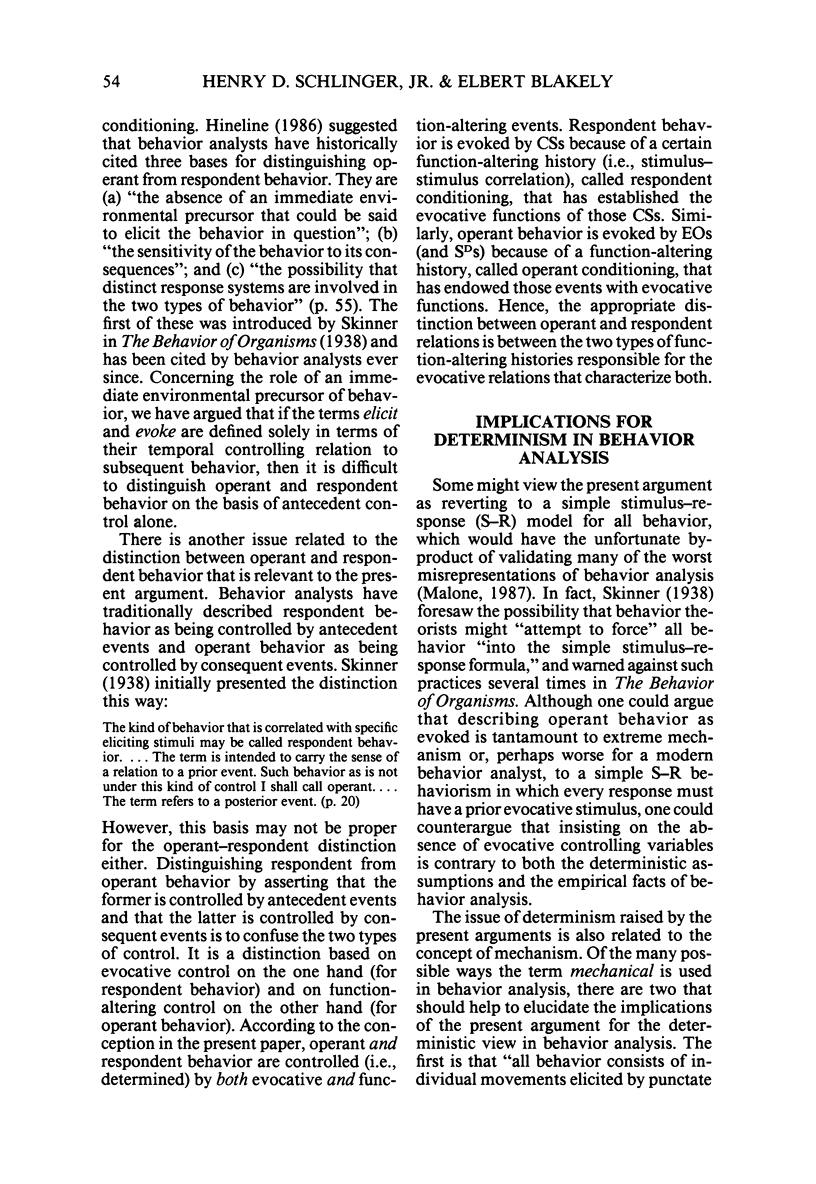
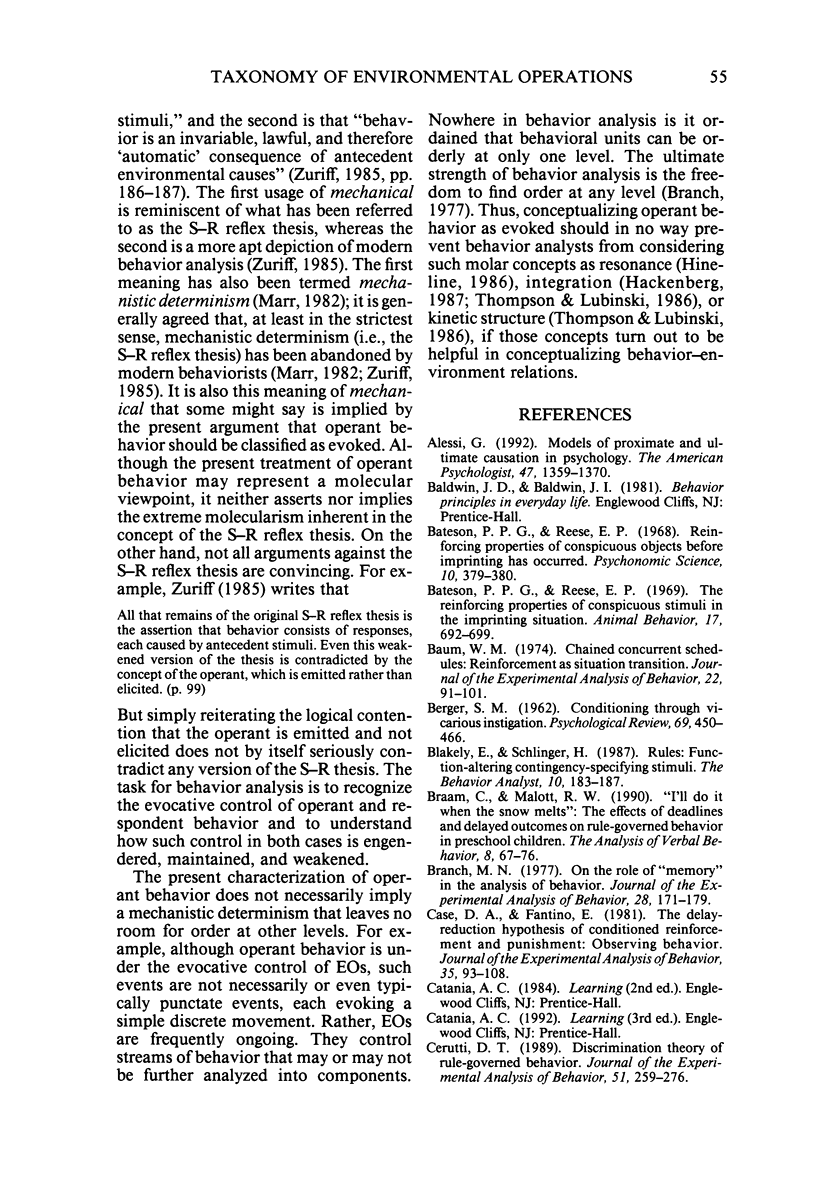
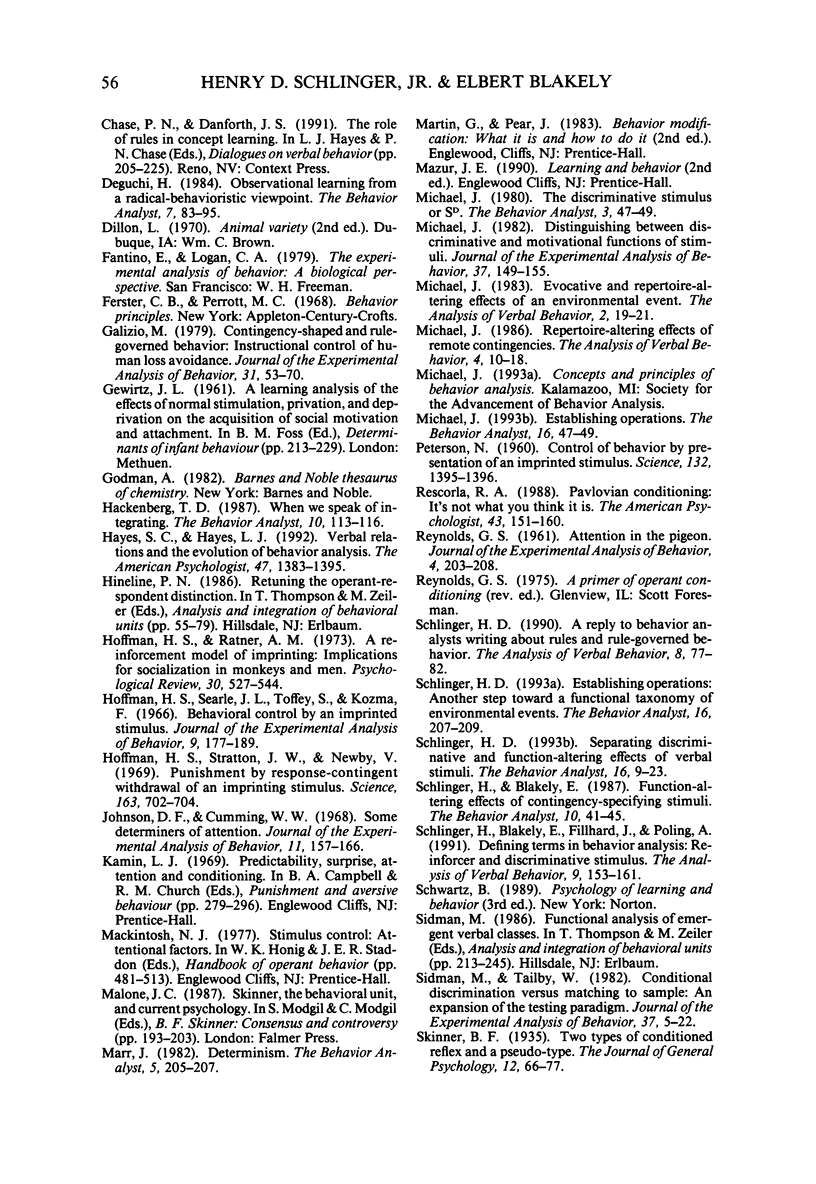
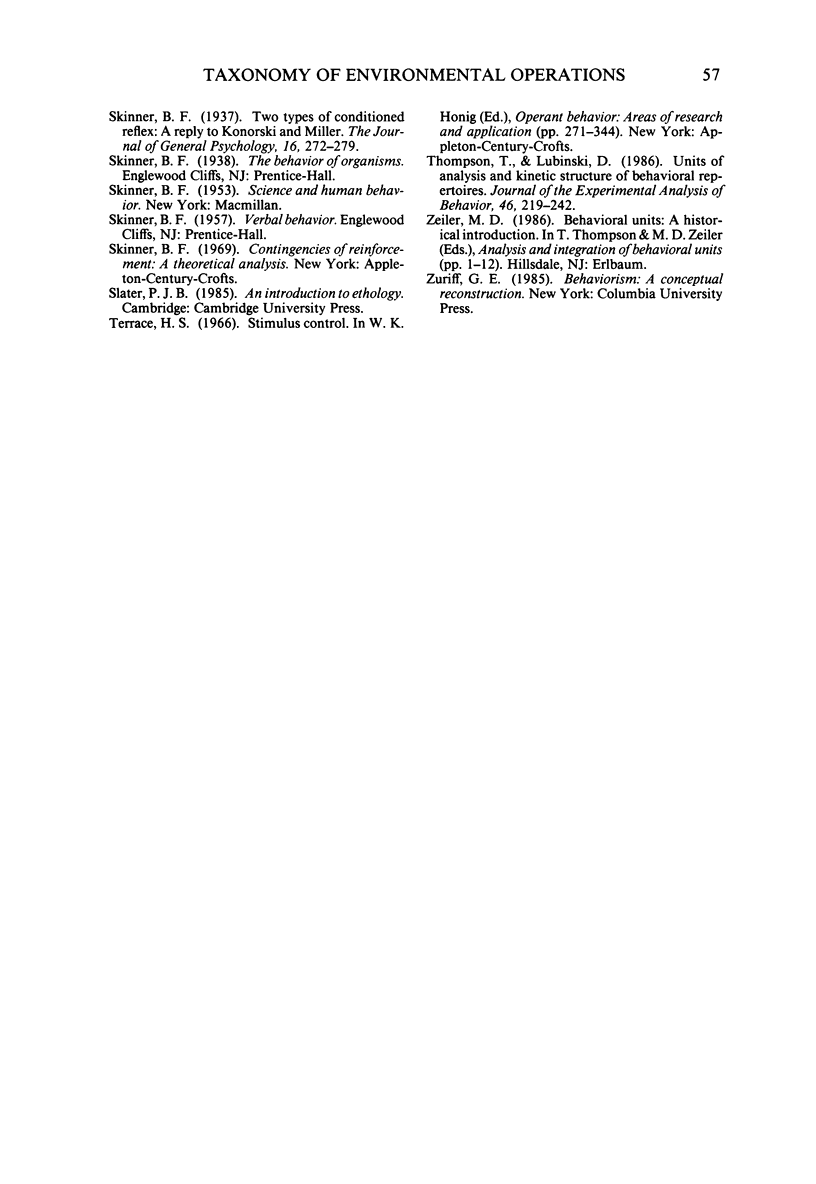
Selected References
These references are in PubMed. This may not be the complete list of references from this article.
- Alessi G. Models of proximate and ultimate causation in psychology. Am Psychol. 1992 Nov;47(11):1359–1370. doi: 10.1037//0003-066x.47.11.1359. [DOI] [PubMed] [Google Scholar]
- Baum W. M. Chained concurrent schedules: reinforcement as situation transition. J Exp Anal Behav. 1974 Jul;22(1):91–101. doi: 10.1901/jeab.1974.22-91. [DOI] [PMC free article] [PubMed] [Google Scholar]
- Blakely E., Schlinger H. Rules: Function-altering contingency-specifying stimuli. Behav Anal. 1987 Fall;10(2):183–187. doi: 10.1007/BF03392428. [DOI] [PMC free article] [PubMed] [Google Scholar]
- Branch M. N. On the role of "memory" in the analysis of behavior. J Exp Anal Behav. 1977 Sep;28(2):171–179. doi: 10.1901/jeab.1977.28-171. [DOI] [PMC free article] [PubMed] [Google Scholar]
- Carr E. G. Behavior analysis is not ultimately about behavior. Behav Anal. 1993 Spring;16(1):47–49. doi: 10.1007/BF03392608. [DOI] [PMC free article] [PubMed] [Google Scholar]
- Case D. A., Fantino E. The delay-reduction hypothesis of conditioned reinforcement and punishment: Observing behavior. J Exp Anal Behav. 1981 Jan;35(1):93–108. doi: 10.1901/jeab.1981.35-93. [DOI] [PMC free article] [PubMed] [Google Scholar]
- Cerutti D. T. Discrimination theory of rule-governed behavior. J Exp Anal Behav. 1989 Mar;51(2):259–276. doi: 10.1901/jeab.1989.51-259. [DOI] [PMC free article] [PubMed] [Google Scholar]
- Deguchi H. Observational learning from a radical-behavioristic viewpoint. Behav Anal. 1984 Fall;7(2):83–95. doi: 10.1007/BF03391892. [DOI] [PMC free article] [PubMed] [Google Scholar]
- Galizio M. Contingency-shaped and rule-governed behavior: instructional control of human loss avoidance. J Exp Anal Behav. 1979 Jan;31(1):53–70. doi: 10.1901/jeab.1979.31-53. [DOI] [PMC free article] [PubMed] [Google Scholar]
- Hackenberg T. D. When we speak of integrating.. Behav Anal. 1987 Spring;10(1):113–116. doi: 10.1007/BF03392418. [DOI] [PMC free article] [PubMed] [Google Scholar]
- Hoffman H. S., Searle J. L., Toffey S., Kozma F. Behavioral control by an imprinted stimulus. J Exp Anal Behav. 1966 May;9(3):177–189. doi: 10.1901/jeab.1966.9-177. [DOI] [PMC free article] [PubMed] [Google Scholar]
- Hoffman H. S., Stratton J. W., Newby V. Punishment by response-contingent withdrawal of an imprinted stimulus. Science. 1969 Feb 14;163(3868):702–704. doi: 10.1126/science.163.3868.702. [DOI] [PubMed] [Google Scholar]
- Johnson D. F., Cumming W. W. Some determiners of attention. J Exp Anal Behav. 1968 Mar;11(2):157–166. doi: 10.1901/jeab.1968.11-157. [DOI] [PMC free article] [PubMed] [Google Scholar]
- Marr J. Determinism. Behav Anal. 1982 Fall;5(2):205–207. doi: 10.1007/BF03392389. [DOI] [PMC free article] [PubMed] [Google Scholar]
- Michael J. Distinguishing between discriminative and motivational functions of stimuli. J Exp Anal Behav. 1982 Jan;37(1):149–155. doi: 10.1901/jeab.1982.37-149. [DOI] [PMC free article] [PubMed] [Google Scholar]
- Michael J. The discriminative stimulus or S(D). Behav Anal. 1980 Spring;3(1):47–49. doi: 10.1007/BF03392378. [DOI] [PMC free article] [PubMed] [Google Scholar]
- PETERSON N. Control of behavior by presentation of an imprinted stimulus. Science. 1960 Nov 11;132(3437):1395–1396. doi: 10.1126/science.132.3437.1395. [DOI] [PubMed] [Google Scholar]
- Rescorla R. A. Pavlovian conditioning. It's not what you think it is. Am Psychol. 1988 Mar;43(3):151–160. doi: 10.1037//0003-066x.43.3.151. [DOI] [PubMed] [Google Scholar]
- Schlinger H. D., Jr Establishing operations: Another step toward a functional taxonomy of environmental events. Behav Anal. 1993 Fall;16(2):207–209. doi: 10.1007/BF03392624. [DOI] [PMC free article] [PubMed] [Google Scholar]
- Schlinger H. D., Jr Separating discriminative and function-altering effects of verbal stimuli. Behav Anal. 1993 Spring;16(1):9–23. doi: 10.1007/BF03392605. [DOI] [PMC free article] [PubMed] [Google Scholar]
- Schlinger H., Blakely E. Function-altering effects of contingency-specifying stimuli. Behav Anal. 1987 Spring;10(1):41–45. doi: 10.1007/BF03392405. [DOI] [PMC free article] [PubMed] [Google Scholar]
- Sidman M., Tailby W. Conditional discrimination vs. matching to sample: an expansion of the testing paradigm. J Exp Anal Behav. 1982 Jan;37(1):5–22. doi: 10.1901/jeab.1982.37-5. [DOI] [PMC free article] [PubMed] [Google Scholar]
- Thompson T., Lubinski D. Units of analysis and kinetic structure of behavioral repertoires. J Exp Anal Behav. 1986 Sep;46(2):219–242. doi: 10.1901/jeab.1986.46-219. [DOI] [PMC free article] [PubMed] [Google Scholar]


